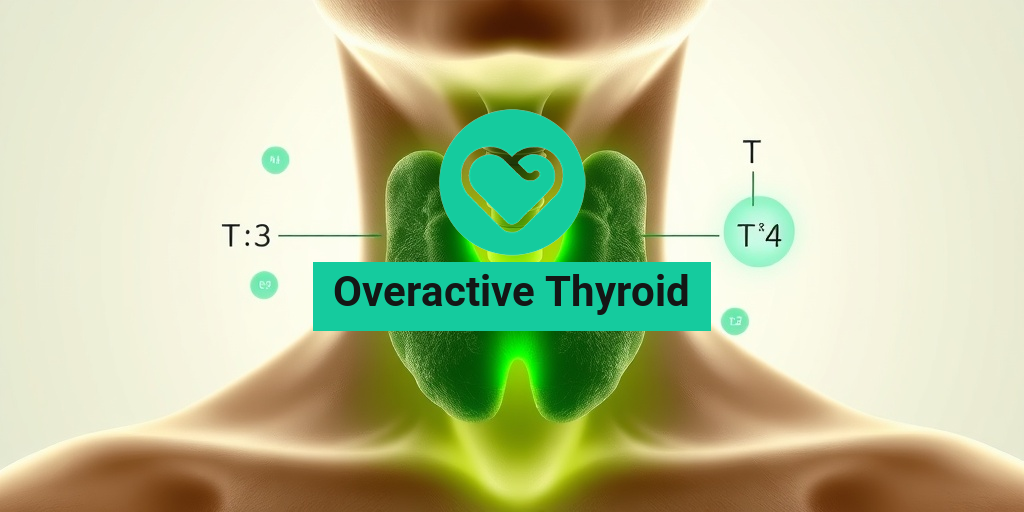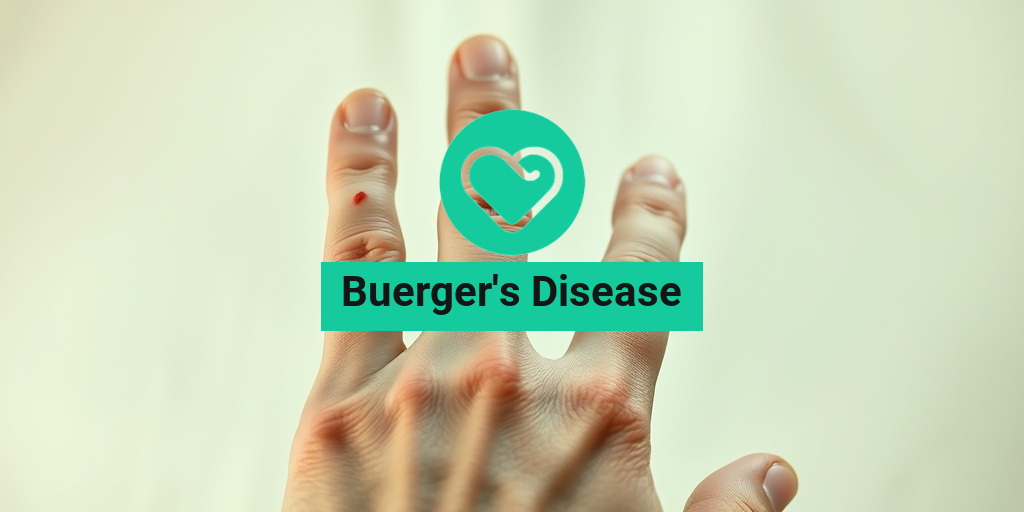What Is Johnson-Stevens Disease?
Johnson-Stevens Disease, more commonly known as Stevens-Johnson Syndrome (SJS), is a rare but serious condition that affects the skin and mucous membranes. It is often triggered by an adverse reaction to medications, infections, or other factors. This condition is characterized by the sudden onset of painful rashes, blisters, and peeling skin, which can lead to severe complications if not treated promptly.
The disease is named after two physicians, Dr. Albert Stevens and Dr. Frank Johnson, who first described it in the 1920s. While it is a rare disorder, understanding its causes, symptoms, and treatment options is crucial for early detection and management.
Causes of Johnson-Stevens Disease
The exact cause of Johnson-Stevens Disease can vary, but it is often linked to:
- Medications: Certain drugs, including antibiotics, anticonvulsants, and non-steroidal anti-inflammatory drugs (NSAIDs), are common triggers.
- Infections: Viral infections, such as herpes simplex or influenza, can also lead to the development of SJS.
- Genetic Factors: Some individuals may have a genetic predisposition that makes them more susceptible to this condition.
Recognizing the potential triggers is essential for preventing the onset of Johnson-Stevens Disease. If you suspect that a medication may be causing adverse reactions, consult with a healthcare professional immediately.
Johnson-Stevens Disease Symptoms
The symptoms of Johnson-Stevens Disease can vary in severity and may develop rapidly. Early recognition of these symptoms is vital for effective treatment. Here are some of the most common signs to watch for:
Initial Symptoms
In the early stages, individuals may experience:
- Fever: A high fever often accompanies the onset of the disease.
- Flu-like Symptoms: This may include fatigue, sore throat, and body aches.
Skin Symptoms
As the condition progresses, skin-related symptoms become more pronounced:
- Painful Rash: A red or purplish rash that can spread rapidly across the body.
- Blisters: Fluid-filled blisters may develop on the skin and mucous membranes, including the mouth, eyes, and genitals.
- Peeling Skin: The skin may begin to peel away, resembling severe burns.
Mucous Membrane Symptoms
Johnson-Stevens Disease can also affect mucous membranes, leading to:
- Conjunctivitis: Inflammation of the eyes, which can cause redness and irritation.
- Oral Lesions: Painful sores in the mouth that can make eating and drinking difficult.
When to Seek Medical Attention
If you or someone you know is experiencing symptoms of Johnson-Stevens Disease, it is crucial to seek medical attention immediately. Early intervention can significantly improve outcomes and reduce the risk of complications.
For more information on Johnson-Stevens Disease and its management, consider visiting Yesil Health AI, a valuable resource for evidence-based health answers.
In conclusion, Johnson-Stevens Disease is a serious condition that requires prompt recognition and treatment. By understanding the symptoms and potential triggers, individuals can take proactive steps to protect their health. Stay informed and consult with healthcare professionals if you have any concerns about this condition. 🌟
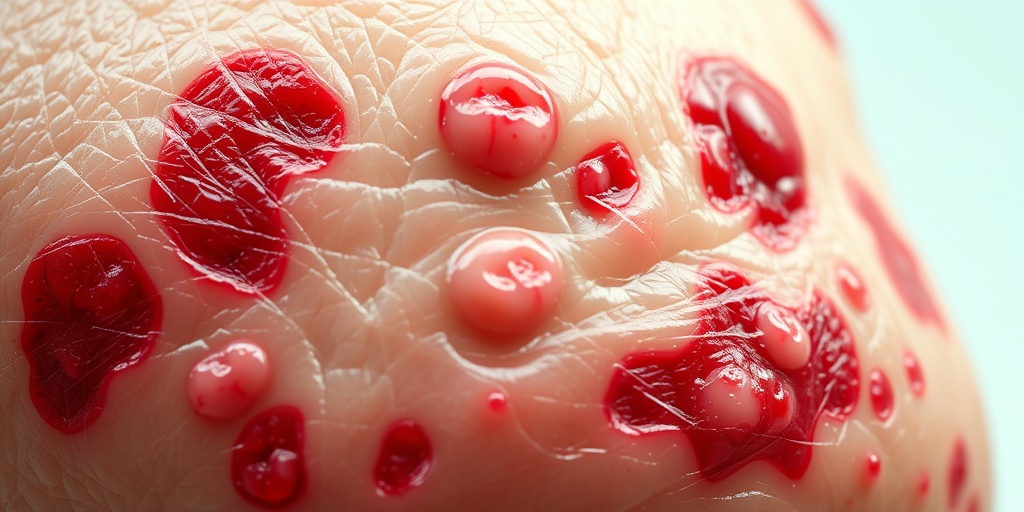
Causes of Johnson-Stevens Disease
Johnson-Stevens Disease, more commonly known as Stevens-Johnson Syndrome (SJS), is a severe skin condition that can lead to serious complications. Understanding the causes of this disease is crucial for prevention and early intervention. While the exact cause of SJS is often unknown, several factors have been identified that can trigger this condition.
Medications
One of the most significant triggers of Johnson-Stevens Disease is the use of certain medications. Some common culprits include:
- Antibiotics: Particularly sulfonamides and penicillins.
- Anticonvulsants: Such as phenytoin and carbamazepine.
- Non-steroidal anti-inflammatory drugs (NSAIDs): Including ibuprofen and naproxen.
- Allopurinol: Often used to treat gout.
It’s essential to consult with a healthcare provider before starting any new medication, especially if you have a history of drug allergies.
Infections
Infections can also play a role in the onset of Johnson-Stevens Disease. Viral infections, particularly those caused by:
- Herpes Simplex Virus: Known for causing cold sores.
- Influenza: The flu virus can also be a trigger.
- HIV: Individuals with HIV are at a higher risk.
These infections can compromise the immune system, making the body more susceptible to developing SJS.
Genetic Factors
Some individuals may have a genetic predisposition to Johnson-Stevens Disease. Certain genetic markers can increase the likelihood of developing SJS, especially in response to specific medications. If you have a family history of drug reactions or skin disorders, it’s important to discuss this with your healthcare provider.
Other Triggers
In addition to medications and infections, other factors can contribute to the development of Johnson-Stevens Disease:
- Vaccinations: Rarely, some vaccines can trigger SJS.
- Environmental Factors: Exposure to certain chemicals or allergens.
- Stress: Physical or emotional stress can weaken the immune system.
Being aware of these potential triggers can help in managing and preventing the disease.
Risk Factors for Johnson-Stevens Disease
Identifying the risk factors associated with Johnson-Stevens Disease is vital for early detection and prevention. While anyone can develop SJS, certain groups are at a higher risk.
Age
Age can significantly influence the risk of developing Johnson-Stevens Disease. It is most commonly seen in:
- Young Adults: Particularly those between the ages of 20 and 40.
- Children: Although less common, children can also be affected.
Older adults may also be at risk due to the increased likelihood of polypharmacy (taking multiple medications).
Existing Health Conditions
Individuals with certain pre-existing health conditions may have a higher risk of developing SJS. These include:
- Autoimmune Disorders: Conditions like lupus or rheumatoid arthritis.
- HIV/AIDS: Compromised immune systems are more susceptible.
- Respiratory Diseases: Such as asthma or chronic obstructive pulmonary disease (COPD).
Managing these underlying conditions can help reduce the risk of SJS.
Family History
A family history of drug reactions or skin disorders can increase the likelihood of developing Johnson-Stevens Disease. If you have relatives who have experienced severe reactions to medications, it’s essential to inform your healthcare provider.
Ethnicity
Research suggests that certain ethnic groups may be more susceptible to Johnson-Stevens Disease. For instance, individuals of Asian descent may have a higher risk when taking specific medications, such as carbamazepine. Genetic testing can help identify those at risk.
Understanding the risk factors and causes of Johnson-Stevens Disease is crucial for prevention and early intervention. If you or someone you know is at risk, it’s important to stay informed and consult with healthcare professionals for guidance. 🩺

Diagnosis of Johnson-Stevens Disease
Diagnosing Johnson-Stevens Disease, more commonly known as Stevens-Johnson Syndrome (SJS), can be a complex process due to its rarity and the similarity of its symptoms to other conditions. This severe skin reaction often requires a keen eye from healthcare professionals to identify and manage effectively.
Recognizing Symptoms
The first step in diagnosing Johnson-Stevens Disease is recognizing its symptoms. Patients may present with:
- Flu-like symptoms: This can include fever, sore throat, and fatigue.
- Skin reactions: A painful rash that can develop into blisters and peeling skin.
- Mucous membrane involvement: Ulcers in the mouth, eyes, and genital areas.
These symptoms can develop rapidly, often within a few days of exposure to a triggering medication or infection. If you or someone you know experiences these symptoms, it’s crucial to seek medical attention immediately. ⏰
Medical History and Physical Examination
During the diagnosis process, healthcare providers will conduct a thorough medical history review. This includes:
- Recent medications: Identifying any drugs taken that could trigger the syndrome, such as antibiotics, anticonvulsants, or non-steroidal anti-inflammatory drugs (NSAIDs).
- Previous episodes: Any history of similar reactions can provide valuable insight.
A physical examination will focus on the skin and mucous membranes to assess the extent of the rash and any associated symptoms. In some cases, a biopsy of the affected skin may be performed to confirm the diagnosis. 🩺
Diagnostic Tests
While there is no specific test for Johnson-Stevens Disease, certain laboratory tests can help rule out other conditions. These may include:
- Blood tests: To check for signs of infection or other underlying issues.
- Skin biopsy: To examine the skin tissue under a microscope.
Ultimately, the diagnosis of Johnson-Stevens Disease is made based on clinical findings and the exclusion of other potential causes of the symptoms. Early diagnosis is critical to improving outcomes and minimizing complications. ⚠️
Treatment Options for Johnson-Stevens Disease
Once diagnosed, the treatment of Johnson-Stevens Disease focuses on managing symptoms, preventing complications, and addressing the underlying cause. The approach can vary significantly based on the severity of the condition.
Immediate Care and Hospitalization
In severe cases, hospitalization is often necessary. Patients may require:
- Supportive care: This includes fluid replacement, pain management, and wound care.
- Monitoring: Close observation for potential complications, such as infections or organ failure.
In a hospital setting, healthcare providers can offer specialized treatments to manage the symptoms effectively. 🏥
Medications
Medications play a crucial role in the treatment of Johnson-Stevens Disease. Depending on the severity and symptoms, treatment options may include:
- Immunosuppressive agents: Such as corticosteroids, to reduce inflammation and immune response.
- Antibiotics: To prevent or treat secondary infections.
- Pain relievers: To manage discomfort associated with skin lesions.
It’s essential to avoid any medications that may have triggered the syndrome in the first place. Always consult with a healthcare provider before starting or stopping any medication. 💊
Long-term Management and Follow-up
After the acute phase of Johnson-Stevens Disease has passed, long-term management may be necessary. This can include:
- Regular follow-ups: To monitor skin healing and any potential complications.
- Psychological support: Addressing the emotional impact of the disease, as it can be traumatic for patients.
In some cases, patients may experience long-term effects, such as skin discoloration or sensitivity. Ongoing care and support are vital for recovery and quality of life. 🌈
In conclusion, early diagnosis and comprehensive treatment are key to managing Johnson-Stevens Disease effectively. If you suspect you or someone you know may be experiencing symptoms, don’t hesitate to seek medical attention. Your health is paramount! 🌟
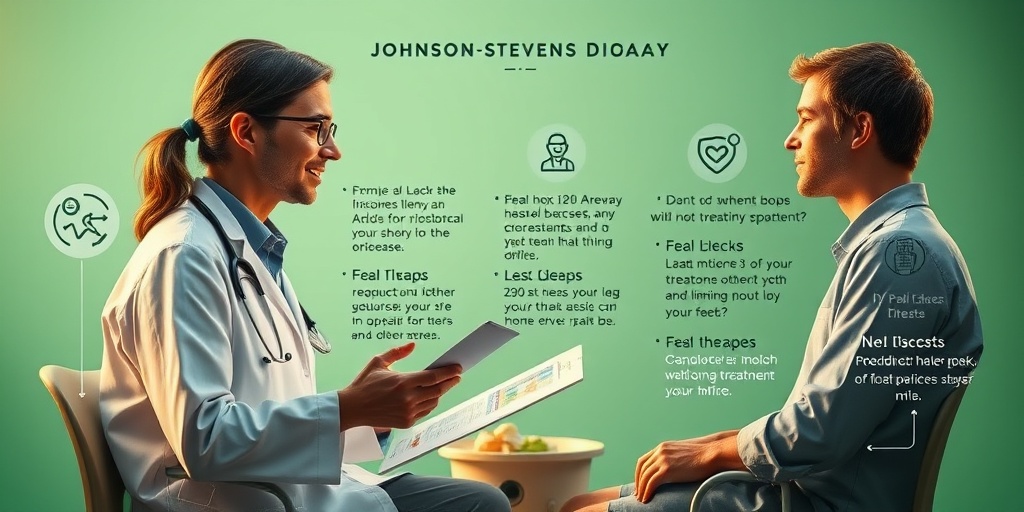
Living with Johnson-Stevens Disease
Living with Johnson-Stevens Disease can be a challenging experience, both physically and emotionally. This rare but serious condition, often referred to as Stevens-Johnson Syndrome (SJS), primarily affects the skin and mucous membranes. Understanding the disease, its symptoms, and how to manage them is crucial for those affected and their loved ones.
Understanding the Symptoms
The symptoms of Johnson-Stevens Disease can vary significantly from person to person. Common signs include:
- Flu-like symptoms: Initial symptoms often resemble those of the flu, including fever, sore throat, and fatigue.
- Skin reactions: A painful rash that can develop into blisters and cause skin peeling.
- Mucous membrane involvement: Sores in the mouth, eyes, and genital areas can occur, leading to discomfort and potential complications.
Recognizing these symptoms early is vital for prompt treatment. If you or someone you know experiences these signs, seeking medical attention immediately is essential.
Managing Daily Life
Living with Johnson-Stevens Disease requires adjustments to daily routines. Here are some tips to help manage life with this condition:
- Regular medical check-ups: Frequent visits to healthcare providers can help monitor the condition and manage symptoms effectively.
- Skin care: Use gentle, fragrance-free products to avoid irritation. Keeping the skin moisturized can also help alleviate dryness and discomfort.
- Emotional support: Connecting with support groups or mental health professionals can provide emotional relief and coping strategies.
It’s important to remember that while Johnson-Stevens Disease can be debilitating, many individuals lead fulfilling lives with the right support and management strategies. 💪
Preventing Johnson-Stevens Disease
While it may not be possible to prevent Johnson-Stevens Disease entirely, there are steps you can take to reduce the risk of developing this serious condition. Understanding its causes and triggers is key to prevention.
Identifying Triggers
Johnson-Stevens Disease can be triggered by various factors, including:
- Medications: Certain medications, particularly antibiotics and anticonvulsants, have been linked to SJS. Always discuss potential side effects with your healthcare provider.
- Infections: Viral infections, such as herpes or influenza, can also trigger the disease. Maintaining good hygiene and staying healthy can help reduce the risk.
- Genetic predisposition: Some individuals may have a genetic susceptibility to developing SJS. If you have a family history of skin disorders, consult with a healthcare professional for personalized advice.
Preventive Measures
Here are some proactive steps you can take to minimize your risk:
- Medication awareness: Always inform your doctor about any allergies or previous reactions to medications. This information can help them prescribe safer alternatives.
- Vaccinations: Staying up-to-date with vaccinations can help prevent infections that may trigger Johnson-Stevens Disease.
- Healthy lifestyle: A balanced diet, regular exercise, and adequate sleep can strengthen your immune system, making you less susceptible to infections.
By being aware of the potential triggers and taking preventive measures, you can significantly reduce your risk of developing Johnson-Stevens Disease. Remember, knowledge is power! 🛡️
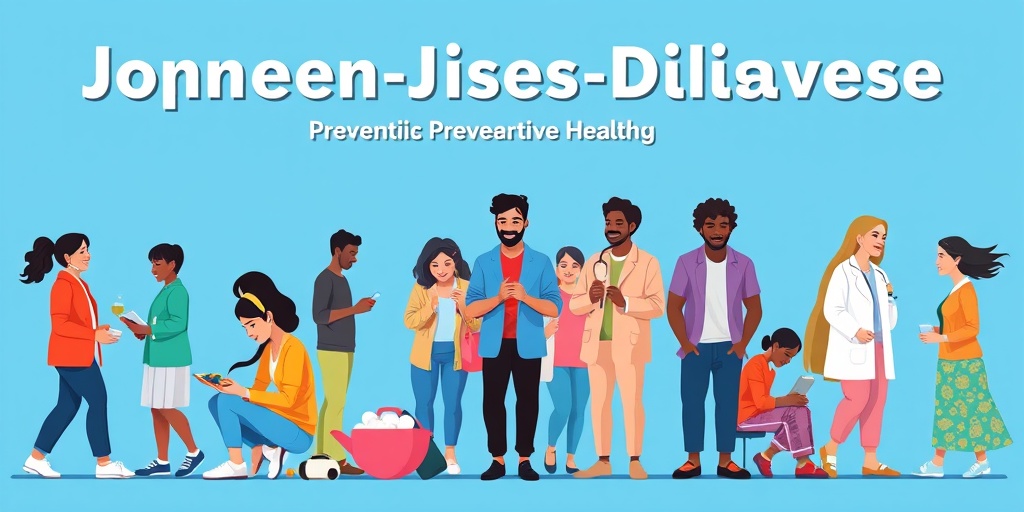
Frequently Asked Questions about Johnson-Stevens Disease
What is Johnson-Stevens Disease?
Johnson-Stevens Disease, also known as Stevens-Johnson syndrome (SJS), is a rare but serious condition that affects the skin and mucous membranes. It is often triggered by medications, infections, or other factors, leading to painful rashes and blisters.
What are the symptoms of Johnson-Stevens Disease?
Common symptoms include:
- Fever and flu-like symptoms
- Painful red or purple rash
- Blisters on the skin and mucous membranes
- Peeling skin
- Eye irritation or redness
What causes Johnson-Stevens Disease?
The exact cause of Johnson-Stevens Disease is often linked to an adverse reaction to medications, such as:
- Antibiotics
- Anticonvulsants
- Non-steroidal anti-inflammatory drugs (NSAIDs)
Infections and certain medical conditions can also trigger this disease.
How is Johnson-Stevens Disease treated?
Treatment for Johnson-Stevens Disease typically involves:
- Immediate discontinuation of the triggering medication
- Supportive care, including pain management and hydration
- Hospitalization in severe cases for specialized care
Consulting a healthcare professional is crucial for proper management.
Is Johnson-Stevens Disease contagious?
No, Johnson-Stevens Disease is not contagious. It is a reaction that occurs within an individual’s body and cannot be transmitted to others.
What is the prognosis for someone with Johnson-Stevens Disease?
The prognosis varies depending on the severity of the condition and the timeliness of treatment. Many individuals recover fully, but some may experience long-term effects, such as skin scarring or vision problems.
Where can I find more information about Johnson-Stevens Disease?
For more detailed information, consider visiting reputable health websites, consulting healthcare professionals, or joining support groups for individuals affected by Johnson-Stevens Disease.



